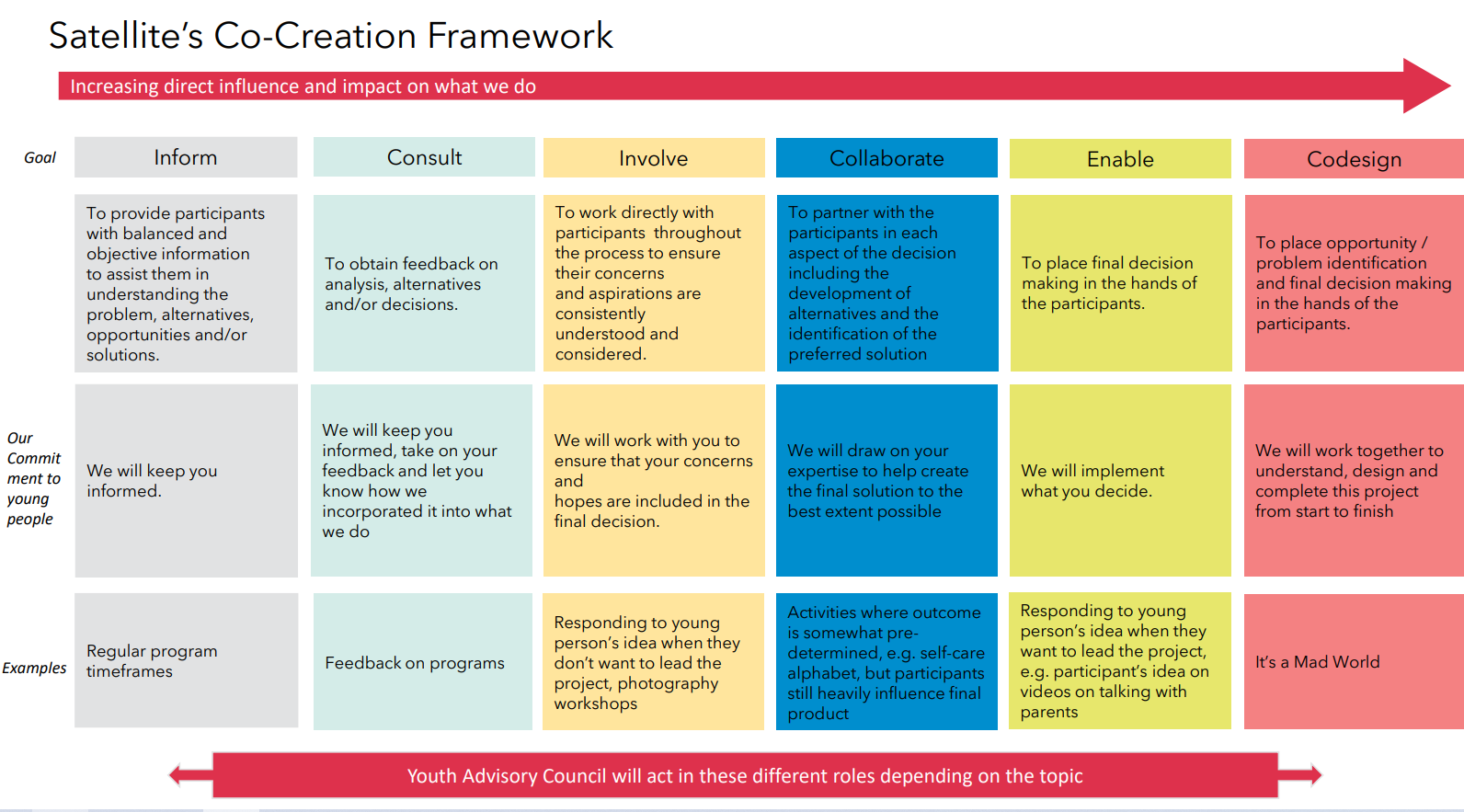“When I was your age…” A series of lived and living experience art
“When I was your age…” is a series of lived and living experience art made by young people at Satellite.
Co-creation is a very important ingredient in Satellite’s “special sauce” – it’s something we are known for, and we are always looking for ways to apply co-creation in our programs and activities because creativity is at the heart of all that we do. But what is co-creation and what does it look like in practice? Satellite’s Youth Advisor Lotti O’Dea talks everything co-creation in the Satellite space, in this quick read.
At Satellite, co-creation is a term that covers several different ways young people and/or families shape and influence what we do – whether that’s Satellite’s organisational processes or program design, or opportunities to amplify young voices.
Our concept of co-creation has evolved out of 10 years of Satellite staff naturally finding ways and opportunities to actively listen to and act on young people’s ideas and interests. However – just as young people are all different – we’ve incorporated the voices of young people in different ways. For example:
All these activities have an impact on what we do – but some have a more direct impact than others. To make it clearer for us and for young people, we use our co-creation framework to describe the different ways Satellite will include young people and/or families in shaping what we do.

A lot of terms are thrown around in mental health now: co-creation, co-design, co-production, co-delivery, and others. In that environment we find:
We think it’s more important to use co-design when it’s needed, and to be transparent about using other approaches when they are more appropriate for co-creation – because sometimes they are more appropriate. This is especially important in Satellite spaces because:
If you’re a young person or a parent/carer: You or your child or young person can start getting a taster of our co-creation work through participating in our programs or (if you’re 14+) joining our Youth Pathways Program. If you’re unsure where to start, contact us here. We love to hear co-creation ideas from family members and friends too! Drop us a line at hello@satellitefoundation.org.au.
If you’re a professional working with young people and/or in the mental health space, you can refer a young person here. Or just interested? You can contact the Satellite team at hello@satellitefoundation.org.au.
We acknowledge the Traditional Custodians of the land we live, work and create on, and pay our respects to Elders past and present.
We acknowledge that sovereignty was never ceded.
Always was, always will be, Aboriginal land.